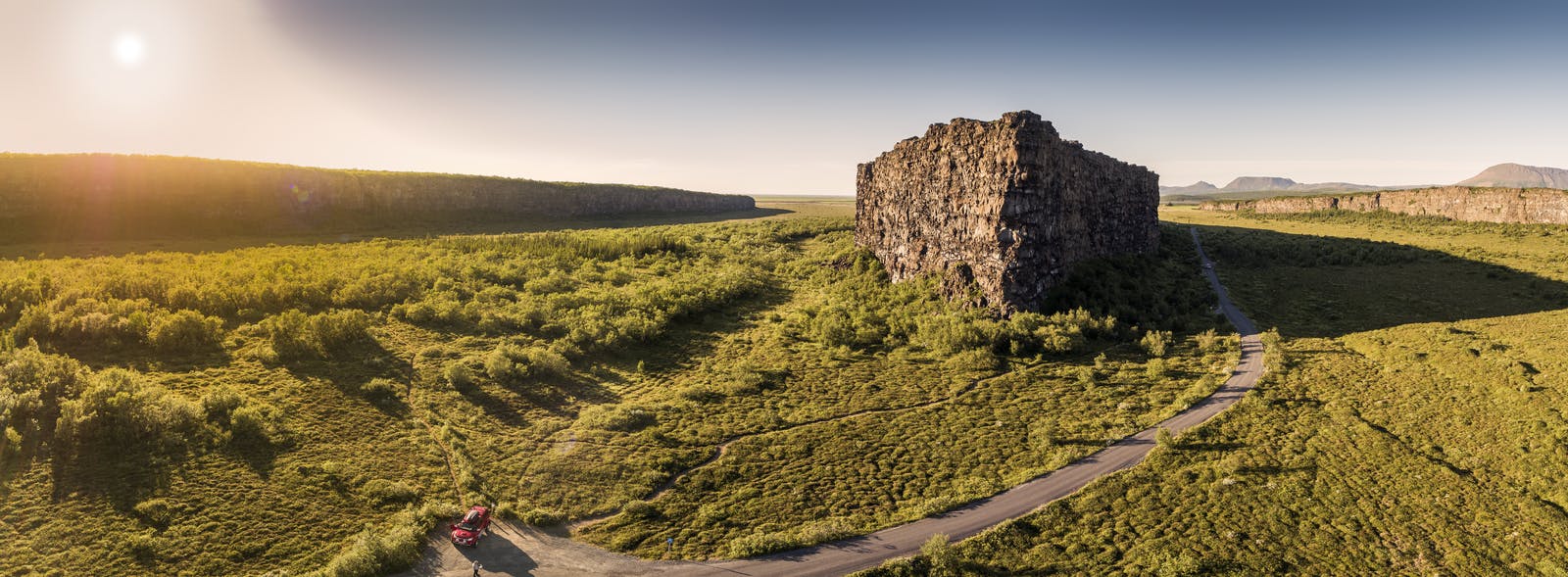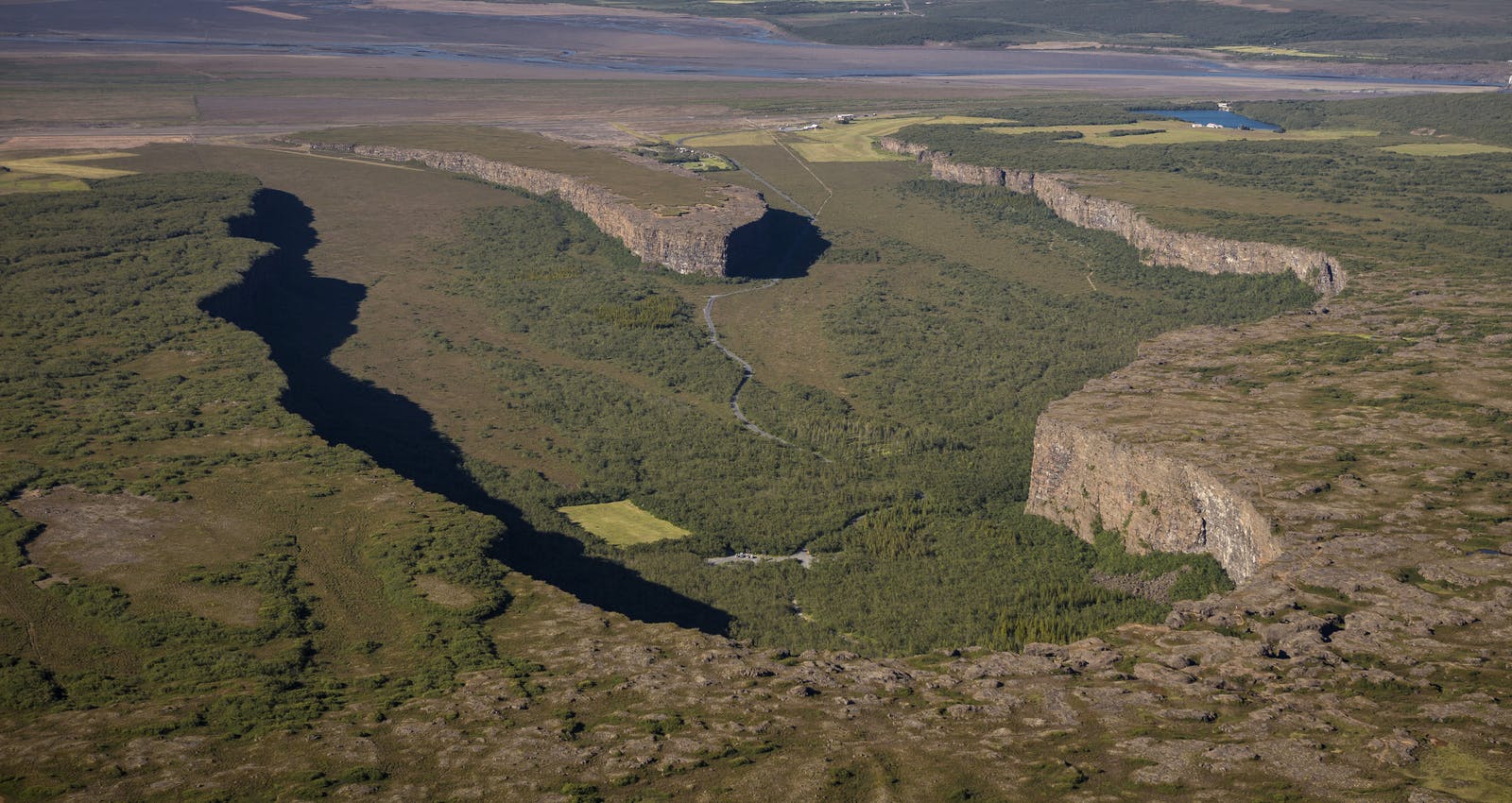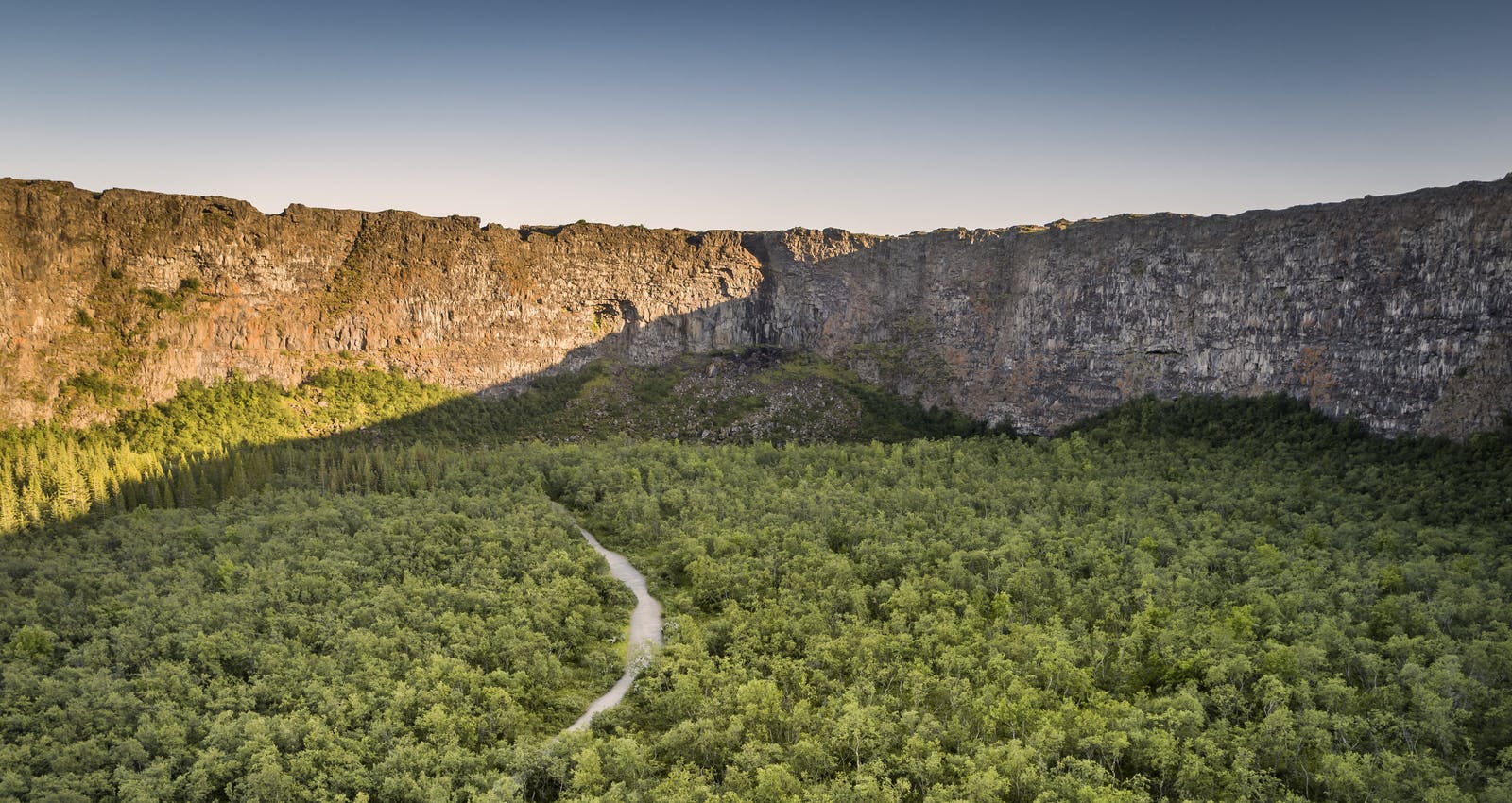
Guide to Ásbyrgi Canyon
Nestled within the expansive Vatnajökull National Park in northern Iceland, Ásbyrgi Canyon stands as a testament to the Earth's geological forces and the intriguing interplay between ice and water. This horseshoe-shaped depression, with its towering cliffs and verdant surroundings, has captured the imagination of both tourists and scientists alike. In this exploration, we delve into the scientific intricacies of Ásbyrgi, unravelling the geological processes that have shaped this remarkable landscape.
Formation of Ásbyrgi Canyon

Ásbyrgi's genesis can be traced back to the last glacial period, specifically to a series of cataclysmic events resulting from glacial flooding. The key player in this geological drama is the river Jökulsá á Fjöllum, coursing through the northern reaches of Iceland. This river is fed by the melting waters of Vatnajökull, Europe's largest glacier.
During the last glacial maximum, around 20,000 years ago, Iceland was entirely covered by glaciers. After that, the vast glaciers started to melt and retreat. Ice-free areas appeared where volcanoes erupted. 12,000 years ago, a powerful and long-lasting eruption formed a wide shield volcano, Þeistareykjabunga. The lavas are more than 20 cubic kilometres in volume, covering the Ásbyrgi area.
As the climate warmed and the glacier retreated, colossal amounts of meltwater accumulated within its icy confines, resulting in a series of spectacular glacial outburst floods known as jökulhlaups. The first one rushed along Jökulsá á Fjöllum and across the young lavas from Þeystareykjabubga 8-10 thousand years ago, and the last and largest one 3000 years ago, most likely as a result of a subglacial eruption in Vatnajökull glacier.
These glacial outburst floods are among the most powerful and dynamic geomorphological processes on Earth. As the subglacial meltwater rapidly drained from Vatnajökull, it surged towards the lowlands with unparalleled force. The immense energy unleashed by the floodwaters scoured the landscape, carving out channels, shaping valleys, and leaving behind profound geological features such as Ásbyrgi.
The unique horseshoe shape of Ásbyrgi is attributed to the erosion of the flood when it was divided into two branches, digging canyons on both sides of the high central cliff. The process of erosion and deposition during the flood further contributed to the canyon's present-day form, sculpting the towering cliffs that flank its sides. After the flood, the river left the Ásbyrgi canyon and changed its course. Now it runs about 2 km to the east.
Glacier's Impact on Nature in Iceland
Ásbyrgi is a true testament of what mother nature can do. The canyon is standing due to glacial floods, which might get people to think about Iceland's glaciers and their bleak future. At Perlan in Reykjavík, you can visit the Ice Cave and Glacier Exhibition to learn more about exactly that.
Cliffs, Basalt Columns, and Botanical Riches

The cliffs that encircle Ásbyrgi reach impressive heights, providing a dramatic backdrop to the lush vegetation within the canyon. Composed primarily of dark, fine-grained basaltic lava, these cliffs are a testament to Iceland's volcanic origins.
One striking feature of Ásbyrgi's basalt cliffs is the presence of columnar jointing. These hexagonal or pentagonal columns are the result of the slow cooling and contraction of lava flows. As the lava cools, it contracts and fractures, creating the distinctive polygonal shapes seen in basalt columns. The orderly arrangement of these columns adds a geometric elegance to Ásbyrgi's geological tapestry.
Beneath the cliffs and within the canyon, a diverse array of plant life thrives, making Ásbyrgi not only a geological wonder but also an ecological haven. The fertile soils and sheltered conditions within the canyon provide a conducive environment for a variety of plant species. Birch trees, willows, and a tapestry of vibrant wildflowers blanket the canyon floor, creating a stark contrast to the austere basalt cliffs.
A Biodiverse Oasis
Beyond its geological and botanical richness, Ásbyrgi also serves as a haven for diverse fauna. The canyon and its surroundings host a variety of bird species, with nesting sites perched on the cliffs. Visitors may encounter the haunting calls of ravens echoing through the canyon, while seabirds like fulmars find refuge on the coastal cliffs nearby.
Ásbyrgi's location within Vatnajökull National Park adds to its biodiversity, as the park is home to a range of terrestrial and aquatic species. Arctic foxes, elusive and adapted to the harsh Arctic conditions, may roam the vicinity.
Ásbyrgi Canyon in Icelandic Folklore

Ásbyrgi Canyon holds a special place in Icelandic folklore, where myths and legends intertwine with the geological wonders of the landscape. The canyon's unique horseshoe shape has inspired various stories, often rooted in the rich tapestry of Icelandic mythology. Here are some aspects of Ásbyrgi in Icelandic folklore:
Sleipnir's Hoofprint
One prominent legend associated with Ásbyrgi involves Sleipnir, the eight-legged horse of the Norse god Odin. According to the myth, Sleipnir's hoofprint created the horseshoe-shaped canyon during a great leap. The Norse god rode his powerful steed across the sky, leaving behind the imprint of Sleipnir's hoof as a lasting mark on the Earth. This mythical explanation adds a mystical dimension to Ásbyrgi, connecting it to the larger Norse mythology that is deeply ingrained in Icelandic culture.
The Álfakirkja or Elfin Church
In Icelandic folklore, it is said that Ásbyrgi was not only shaped by natural forces but also served as a gathering place for supernatural beings. The canyon is sometimes referred to as "Álfakirkja" or the Elfin Church, suggesting that elves, hidden folk, and other mystical creatures congregated in the sheltered embrace of the canyon. The folklore often describes Ásbyrgi as a place where elves held their meetings and festivities, adding an enchanting layer to the geological marvel.
Guardian Spirits
Ásbyrgi is often considered a location with a strong connection to supernatural beings who serve as guardians of the area. Local folklore speaks of spirits or supernatural entities that watch over the canyon, ensuring its protection. Visitors are advised to treat the land with respect, acknowledging the presence of these guardians in the stories passed down through generations.
How To Get to Ásbyrgi from Reykjavík
Ásbyrgi is located in the northeastern part of Iceland, approximately 536 kilometres from Reykjavík. Under normal circumstances, the journey would take about 7 hours non-stop - but ensure to stay up to date with the weather forecast and road conditions. Here is a brief guide on how to reach Ásbyrgi from Reykjavík.
- Take the Ring Road (Route 1) North out of Reykjavík.
- Stay on Route 1 for about 414 kilometres (257 miles), passing through Akureyri.
- Take a left onto Route 85, which will lead you to Ásbyrgi.
- Stay on Route 85 for the remaining 122 kilometres, leading you through Húsavík.
FAQ
How Long Is the Walk in Ásbyrgi?
The length of the walk-in Ásbyrgi can vary depending on the specific trail or route you choose. The most popular trail is the one that takes you around the canyon rim, offering stunning views. This walk can typically take around 1 to 2 hours.
Can You Drive to Ásbyrgi Canyon?
Yes, you can drive to Ásbyrgi Canyon. Ásbyrgi is located in Vatnajökull National Park in northern Iceland.
How Was Ásbyrgi Canyon Formed?
Ásbyrgi Canyon is believed to have been formed by catastrophic glacial flooding from the river Jökulsá á Fjöllum. The floodwater is thought to have come from Vatnajökull, one of Iceland's largest glaciers. The force of the water, combined with melting ice, is believed to have created the unique horseshoe-shaped depression that character.







